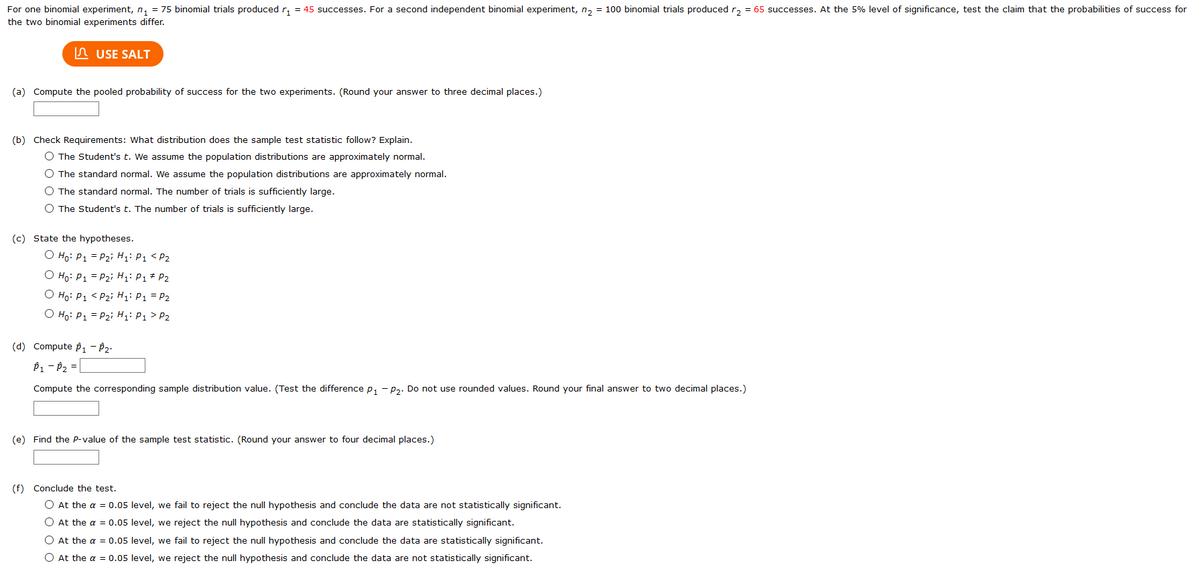For one binomial experiment,
n1
= 75
binomial trials produced
r1
= 45
successes. For a second independent binomial experiment,
n2
= 100
binomial trials produced
r2
= 65
successes. At the 5% level of significance, test the claim that the probabilities of success for the two binomial experiments differ.

Extracted text: For one binomial experiment, n, = 75 binomial trials produced r, = 45 successes. For a second independent binomial experiment, n, = 100 binomial trials produced r, = 65 successes. At the 5% level of significance, test the claim that the probabilities of success for the two binomial experiments differ. n USE SALT (a) Compute the pooled probability of success for the two experiments. (Round your answer to three decimal places.) (b) Check Requirements: What distribution does the sample test statistic follow? Explain. O The Student's t. We assume the population distributions are approximately normal. O The standard normal. We assume the population distributions are approximately normal. O The standard normal. The number of trials is sufficiently large. O The Student's t. The number of trials is sufficiently large. (c) State the hypotheses. O Ho: P1 = P2i H;: P1 < p2="" o="" ho:="" p1="P2i" h:="" p1="" *="" p2="" o="" ho:="" p1="">< p2i="" hi:="" p1="P2" o="" ho:="" p1="P2i" h:="" p1=""> P2 (d) Compute p1 - P2: P1 - P2 = Compute the corresponding sample distribution value. (Test the difference p, - p,. Do not use rounded values. Round your final answer to two decimal places.) (e) Find the P-value of the sample test statistic. (Round your answer to four decimal places.) (f) Conclude the test. O At the a = 0.05 level, we fail to reject the null hypothesis and conclude the data are not statistically significant. O At the a = 0.05 level, we reject the null hypothesis and conclude the data are statistically significant. O At the a = 0.05 level, we fail to reject the null hypothesis and conclude the data are statistically significant. O At the a = 0.05 level, we reject the null hypothesis and conclude the data are not statistically significant.

Extracted text: (g) Interpret the results. O Reject the null hypothesis, there is sufficient evidence that the proportion of the probabilities of success for the two binomial experiments differ. O Fail to reject the null hypothesis, there is insufficient evidence that the probabilities of success for the two binomial experiments differ. O Fail to reject the null hypothesis, there is sufficient evidence that the proportion of the probabilities of success for the two binomial experiments differ. O Reject the null hypothesis, there is insufficient evidence that the proportion of the probabilities of success for the two binomial experiments differ.